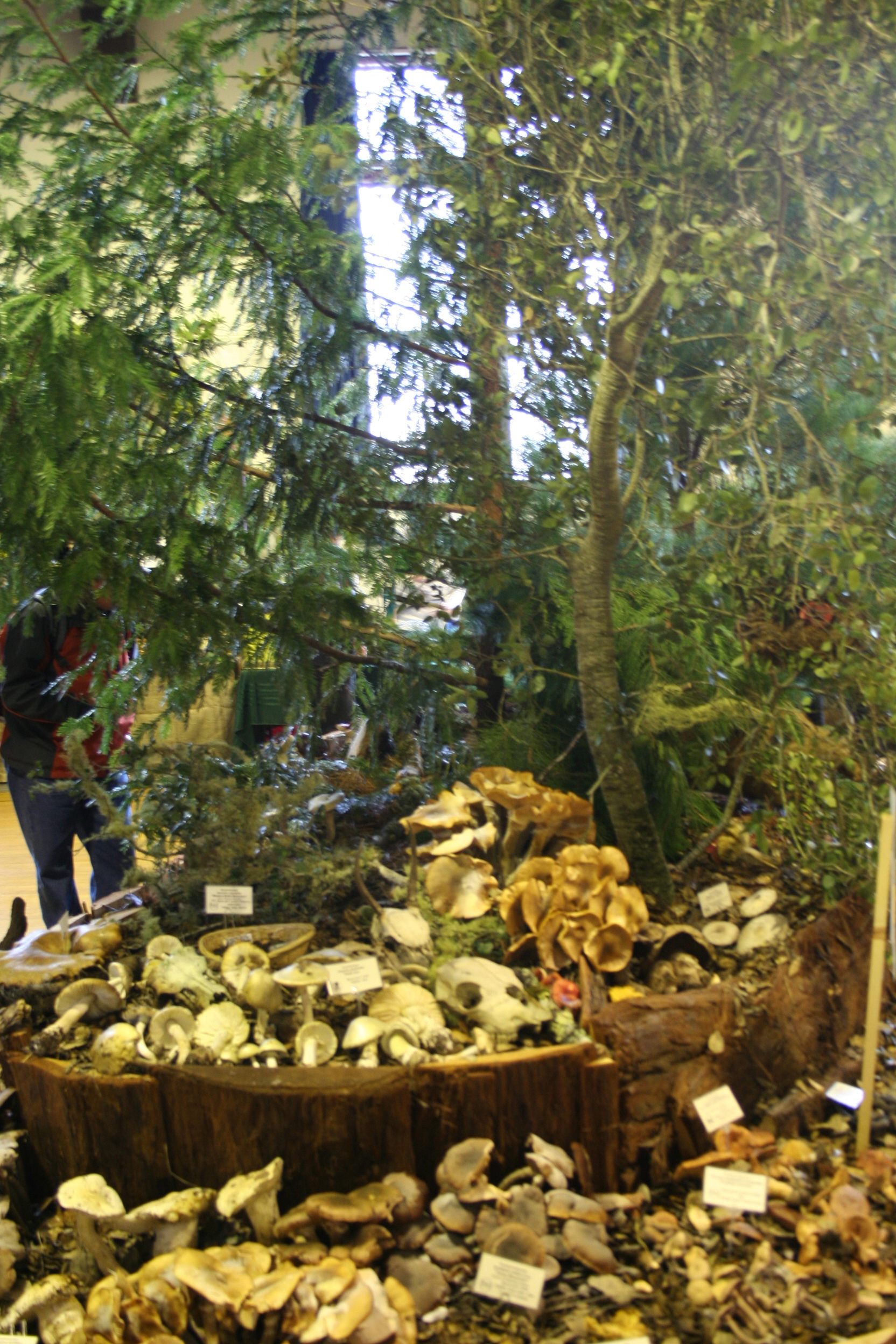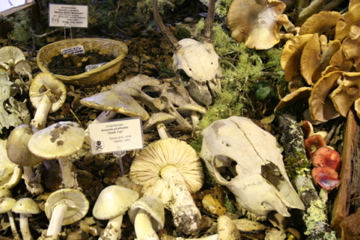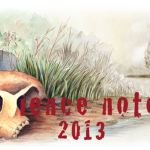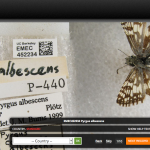I’ve spent decades running trails that wind through the state parks of California. But even though I’ve logged at least ten thousand miles in the middle of nature, I just discovered I’ve been a stranger to an entire kingdom living among the trees—the realm of mushrooms.
Not an animal, yet not exactly a plant, a fungus gets classified in its own kingdom. With denizens ranging from single-celled parasites to half-ton mushrooms that grow out of trees, the fungal world is diverse. And, like all kingdoms, the inhabitants can be good for food or medicine, magically hallucinogenic, or poisonously bad. And there was no better place to discover those differences than the Fungus Fair, an annual event created by the Fungus Federation of Santa Cruz. This year fungus aficionados were educated and entertained at the Louden Nelson Center, January 11-13, in downtown Santa Cruz.
“We want everyone to enjoy mushrooms,” said Phil Carpenter, the appointed prime minister of the Federation. “But you have to know what you’re your doing. You can’t just pick anything and eat it.”
The best guide through the wild world of mushrooms, David Arora, wandered through the drafty, woods-scented halls of the Center all weekend. Arora, whose love affair with fungi started in Santa Cruz, wrote the go-to field guides for mushroom foragers: Demystifying Mushrooms and All That the Rain Promises, and More… So, when he gave two lectures during the Fair, his fans made double lines out the doors of the Center and onto the sidewalk, eager to hear Arora share his spored stories.
“He’s the Willy Wonka of mushrooms,” said Logan Smith, a twenty-something employee of the Cafe Cruz restaurant in Capitola who headed up the line.
By the time Arora started his lecture, every folding chair was taken and people lined the walls. There were pony-tailed men, young couples shushing restless kids, hippie throwbacks in flowing clothes, and everything in between; many had pen and paper in hand, ready to record everything Arora said.
“I started out when I was a kid. I’d follow the old Italian guys. We used to go out in a car that made us look like a gang with Al Capone,” said Arora. In his baseball cap and loose fitting jeans, it was easy to picture him trotting after the older guys. He’s been at it ever since, he said.
Although the audience came for stories from Arora’s decades of experience, the author told them foraging outdoors was the only way to really learn your fungi. Being at the Fair was the next best thing. Volunteers from the Fungus Federation created a mini-forest and “planted” more than 300 species of mushrooms collected from local forays.
After the soaking rains in November, it should be a good year to find mushrooms, said Carpenter. He pointed to a t-shirt logo that read: When it rains it spores.
Unlike the natural world, the mushrooms in this indoor forest sprouted with labels and information cards. All of them were safe to touch. It’s when the picking hits the pot that problems begin. “You don’t want to eat your mistakes,” said Debbie Veiss, also known as “Amanita Rita.” She studies the most poisonous member of the kingdom: Amanita phalloides, commonly known as the “death cap.”
It takes more than a color-coded field guide to know what kind of mushrooms you’ve collected, cautioned Carpenter, a thirty-year member of the Federation. He started his “Mushrooms 101” lecture with the warning rhyme: “You never wanta eata Amanita.”
The “death cap” mushroom is common in Northern California. The fungus got imported along with Oak trees in 1938 and has spread to other host trees since. The wide range of Amanitas means people could pick it anywhere. Even when they shouldn’t.
Experienced foragers staff the Fair’s identification table where the curious and the concerned bring their mushroom collections. Look-a-likes can fool even the most seasoned expert, said Britt Bunyard, publisher of Fungi, a magazine devoted to mushrooms. “Every mushroom is edible— once.”
Despite the danger, mushrooms have a mystique that attracts people. I can’t lean in to touch the rubbery underside of a hedgehog mushroom without shouldering into someone else. Kids dart through the crowd, wearing white hats with red dots: death caps. And there’s a conga line for the candy cap ice cream, an incredibly sweet concoction made with dried “candy cap” mushrooms which give the vanilla-looking ice cream a smooth butter-scotchy, maple syrup flavor that lingers on your breath for hours.
“There’s so much more to mushrooms than meets the eye,” Bunyard said.
I’m beginning to see that.










Comments are closed.